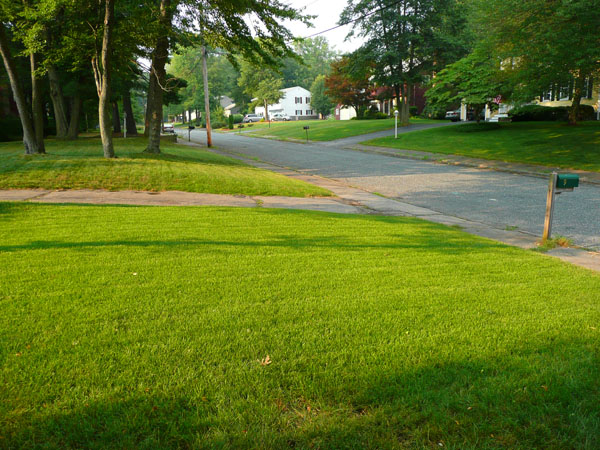It’s All About The Lawn

The people of Medfield respect The Lawn. These are 1/2-acre lots in the photo above, not quite big enough to fall in the “too big to mow, too small to farm” category, but it takes real work to keep these beauties looking so good.
And so the signature sound of the suburbs is the gas lawn mower. On my first morning here the droning growl rang out from across the street at about 8 a.m. (5 a.m. Seattle time). A widow in her seventies lives alone in the four bedroom, two-car garage house, and one of her sons who lives across town has taken on the chore of keeping the lawn up to neighborhood standards.
But here’s the weird thing: For all the time and care people put into their lawns, they rarely seem to use them for anything. For sure lawns are great for kids, and that thick lush grass feels wonderful in bare feet, but pretty much every lawn I’ve seen around these parts in the last two days has been empty. Empty except for people pushing lawn mowers, that is.
A vast green lawn can be a pleasing site (and quite vast they can be when the front lawns of several adjacent suburban lots are strung together). And of course there’s nothing wrong with the wish to create an attractive landscape. But this whole lawn obsession has roots that stretch back over a century or so, and was born out of the desire to ape the wealthy and their country estates. Perhaps it’s time for a new aesthetic.
In Seattle and many other urban areas, it is becoming increasingly popular to replace turf grass lawns with low-maintenance, drought-tolerant and/or native plants. Imagine if this trend catches on in low-density, suburban neighborhoods like the one shown above. With such a large area of land that could be converted, the potential for creating wildlife habitat, saving water, and reducing pesticide/herbicide and fertilizer use would be immense.
And the good people would be released from servitude to The Lawn.
